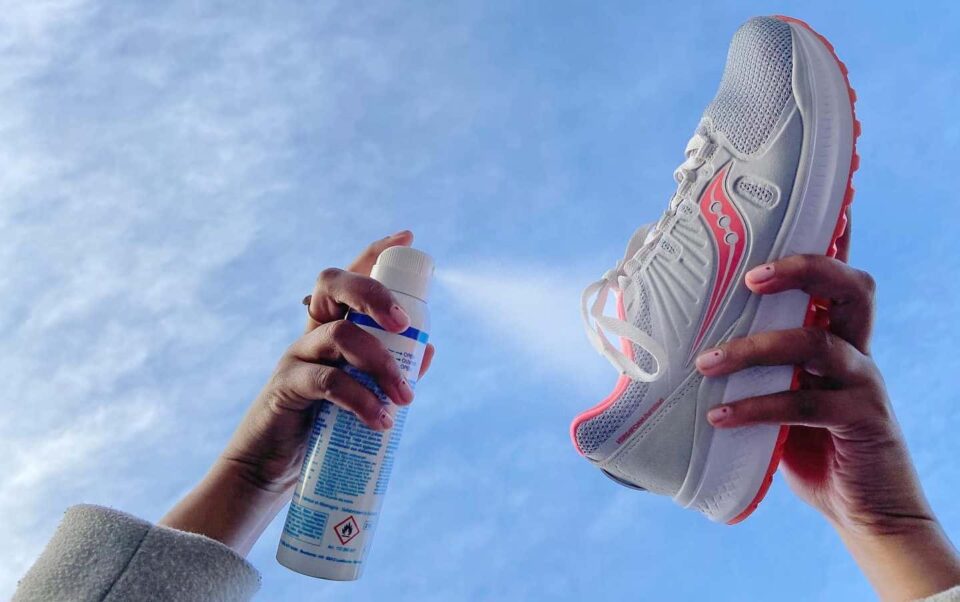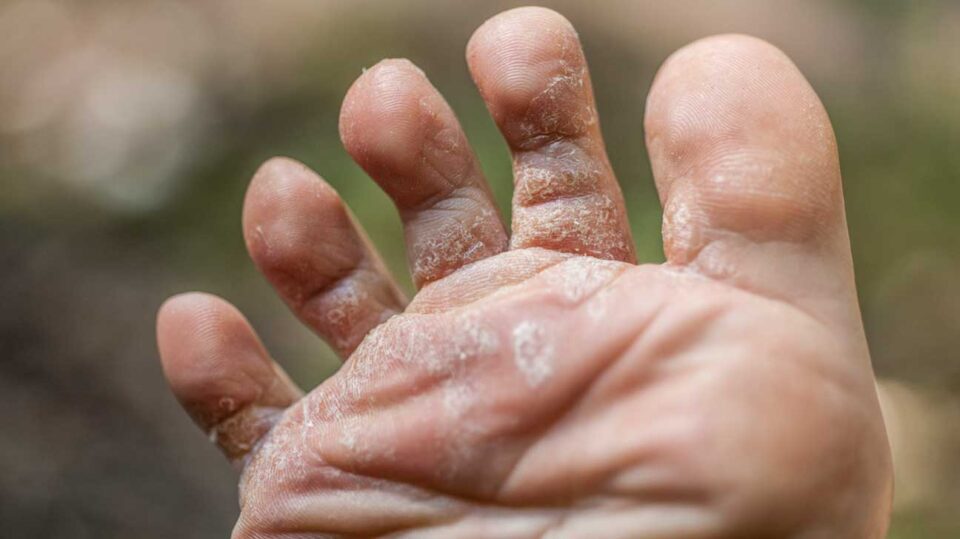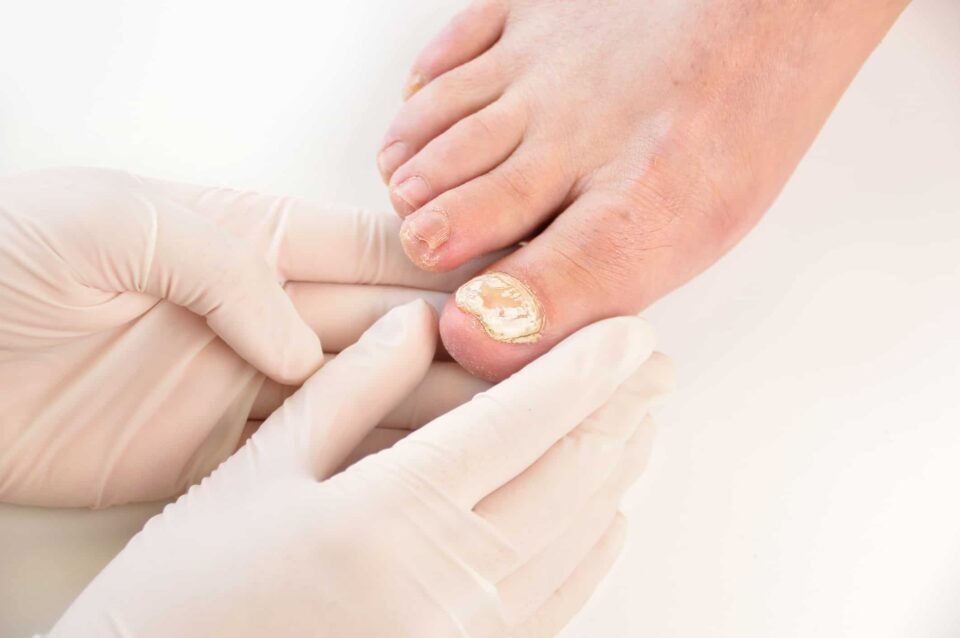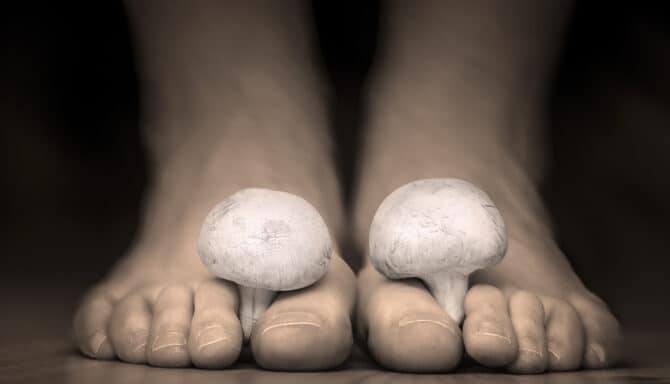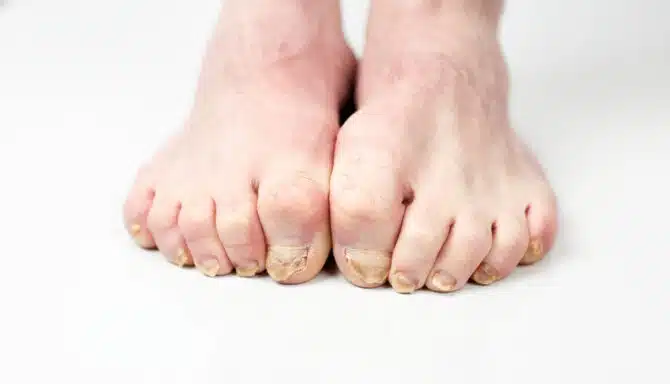November 13, 2025
Toenail fungus is a common foot problem that affects people of all ages, but the risk increases significantly as we grow older. Understanding the connection between age and toenail fungus can help you take steps to protect your foot health and maintain strong, healthy nails throughout your life.
Why Does Toenail Fungus Become More Common with Age?
Several factors make older adults more susceptible to toenail fungal infections:
1. Reduced Immune Function
As we age, our immune system naturally weakens, making it harder for the body to fight off infections, including fungal infections.
2. Slower Nail Growth
Toenails grow more slowly with age, which means fungi have more time to settle and multiply before the nail is naturally shed.
3. Poor Circulation
Aging often comes with reduced blood flow, especially to the extremities. Poor circulation means fewer nutrients and immune cells reach the toenails, impairing the body’s ability to fight infections. Poor circulation also disrupts the toenail growth and moisturization process. This makes toenails more dry and brittle, which makes it easer for fungal infections to penetrate the toenail and set up shop.
4. More Exposure and Wear
Years of nail trauma, tight footwear, or minor injuries can create entry points for fungi.
5. Other Health Conditions
Older adults are more likely to have conditions like diabetes or vascular disease that increase the risk of fungal infections.
Common Symptoms of Toenail Fungus
Thickened nails
Discoloration (yellow, brown, or white spots)
Brittleness or crumbling of the nail edges
Distorted nail shape
Unpleasant odor in some cases
Separation of the nail from the nail bed (onycholysis)
Prevention Tips for Older Adults
Maintain Good Foot Hygiene
Wash feet daily and dry thoroughly, especially between toes.
Keep nails clean and trimmed straight across.
Avoid nail salons. Improperly sanitized tools and foot baths can result in the spread of fungus from other patrons. Instead, opt for a medical pedicure at a foot clinic by a chiropodist.
Wear Proper Footwear
Choose breathable shoes with enough room to avoid pressure on nails.
Avoid walking barefoot in communal areas such as pools or locker rooms.
Manage Underlying Health Conditions
Control diabetes, circulatory problems, and other health issues with your healthcare provider.
Regular Foot Inspections
Check your feet and nails regularly for changes or signs of infection.
You can also get routine medical pedicures by a chiropodist. A chiropodist will monitor your foot health and notice the first signs of any infection.
Consult a Specialist Early
At the first sign of nail changes or discomfort, see a foot care professional for diagnosis and treatment.
Treatment Options for Toenail Fungus
Treatment may include topical antifungal creams, oral medications, laser therapy, or in severe cases, removal of the affected nail. Early intervention improves the chances of successful treatment.
Treating toenail fungus with over-the-counter medication is often ineffective because the toenail blocks medication from penetrating the nail bed. Instead, it's recommended to see a chiropodist at the first signs of a fungal infection. The chiropodist can debride the toenail, which allows prescription antifungal medication to penetrate the nail bed and attack the fungus.
October 16, 2025
Diabetes is a chronic condition that affects many parts of the body, including your feet and toenails. Proper foot care is especially important for people with diabetes because they are at a higher risk of developing complications that can impact mobility and overall health. Understanding how diabetes affects toenails can help you prevent problems and maintain healthy feet.
Why Diabetes Impacts Toenail Health
People with diabetes often experience poor circulation and nerve damage (neuropathy) in their feet. These issues make it harder for wounds and infections to heal and can reduce sensation, so small injuries or infections may go unnoticed. Toenails can also become more vulnerable to damage, infections, and deformities.
Common Toenail Problems in People with Diabetes
1. Fungal Infections
Diabetes can weaken the immune system, making it easier for fungal infections like athlete’s foot or toenail fungus to develop. Fungal toenails may become thickened, discolored, brittle, and painful.
In addition, good circulation is required for the natural moisturization processes in the toenails and feet. Diabetes disrupts blood flow to the feet, which means they can't properly moisturize themselves. This dries out the toenails and causes them to become brittle. It also dries out the skin, which can cause small cracks and abrasions. Fungus can then more easily penetrate through brittle cracked toenails and abrasions. Once it does, it's harder for your body to fight the infection due to diabetes' affect on the immune system.
2. Ingrown Toenails
Reduced sensation means small cuts or ingrown toenails might not be felt immediately, increasing the risk of infection. Ingrown toenails can cause redness, swelling, and pain if left untreated.
3. Toenail Discoloration and Deformities
Poor circulation and infections may cause toenails to change color, thicken, or become deformed. This is because circulation is required to facilitate the toenail growth process. When this process is disrupted, it causes nail cells to build up on top of each other rather than beside each other, which causes thickening and an irregular toenail shape. This can make nail trimming difficult and increase the risk of injury.
4. Delayed Healing
Any cuts or injuries around the toenails heal more slowly in people with diabetes, increasing the chance of complications like ulcers or infections.
Tips for Preventing Toenail Problems with Diabetes
Practice Good Foot Hygiene
Wash your feet daily with warm water and mild soap.
Dry your feet thoroughly, especially between the toes.
Keep Toenails Trimmed and Clean
Cut nails straight across to prevent ingrown toenails.
Avoid cutting nails too short or rounding the corners.
Wear Proper Footwear
Choose shoes with a wide toe box and good support.
Avoid tight or narrow shoes that can cause pressure and injury.
Regular Foot and Toenail Checks
Inspect your feet daily for cuts, blisters, redness, or swelling.
Have a healthcare professional, like a chiropodist, examine your feet regularly.
Manage Blood Sugar Levels
Keeping blood glucose under control supports overall foot health and healing.
When to See a Foot Specialist
It is recommended that people with diabetes include a chiropodist in their healthcare team and see them on a routine, ongoing basis for diabetic foot care. When it comes to diabetes, prevention is the best treatment.
If you notice any signs of infection, persistent pain, changes in nail appearance, or wounds that don’t heal, it’s essential to seek professional care promptly. Early intervention can prevent serious complications, including foot ulcers and infections that may lead to amputation.
July 24, 2025
Running is great for your overall health but your toenails might disagree. Many runners deal with painful or unsightly toenail problems, especially after long distances or hill training. Issues are so common that "runner's toenails" is a commonly used term to describe all the toenail damage. Understanding how running impacts toenail health can help you prevent injury and keep your feet in peak condition.
View this post on Instagram A post shared by Feet First Clinic (@feetfirstclinic_)
Common Toenail Issues Runners Experience
Black Toenail from Running (Subungual Hematoma): One of the most recognizable issues, a black toenail develops when repeated impact causes bruising or bleeding under the nail. It’s often due to shoes that are too tight or downhill running.
Toenail Lifting or Falling Off: Constant pressure on the nail bed can cause nails to lift or fall off completely, especially after a marathon or long run. This is usually painless, but it takes months for the nail to regrow.
Thick Toenails After Running: Repeated trauma can lead to thickened toenails, which may resemble fungal infections. This thickening is the nail’s response to long-term micro-damage and may become permanent if untreated.
Ingrown Toenails: Tight shoes or improper nail trimming can lead to ingrown toenails, which are common among runners and can become infected if ignored.
What Causes Running-Related Toenail Damage?
Improper shoe fit: Shoes that are too tight, too loose, or worn out can lead to friction and trauma.
Long toenails: Long nails hit the front of the shoe with every stride, increasing the risk of bruising or lifting.
Downhill running: Increases the impact on the toes.
Sweaty feet: Create a moist environment that can encourage fungal growth.
Inadequate socks: Thin or poorly fitted socks allow for extra movement inside the shoe.
Runner’s Toenail Care: Prevention Tips
Trim your nails regularly – Straight across, not too short, and never rounded at the corners.
Wear proper footwear – Choose shoes with about a thumb’s width of space at the front, and consider a running-specific fit.
Choose the right socks – Moisture-wicking and snug, with no bunching or seams that rub.
Replace shoes as needed – Most running shoes last 500–800 km. Worn-out soles contribute to poor foot mechanics.
Moisturize your feet – Prevent cracking and fungal buildup with a good daily foot care routine.
When to See a Foot Specialist
If your "runner's toenails" are persistently discoloured, painful, or thickened, it’s time for a professional assessment. What seems like a harmless black toenail from running could be a fungal infection, ingrown nail, or even an injury needing care. A chiropodist or foot specialist can safely treat nail trauma, provide custom foot care advice, and help you run pain-free.
View this post on Instagram A post shared by Feet First Clinic (@feetfirstclinic_)
Final Thought
You train hard so don’t let toenail trouble slow you down. By caring for your feet proactively, you can avoid common nail issues and keep running comfortably year-round.
November 7, 2024
Foot odor is a frustrating problem; it goes to show that non-painful foot conditions can be as life altering as painful ones. There are many foot odor myths floating around the internet. In this article, we'll break down some of the most common foot odor myths, and give you the facts about foot odor causes and how to prevent it.
6 Myths About Foot Odor:
Only People With Sweaty Feet Have Foot Odor
Foot Odor Always Means You Have a Serious Health Condition
All Foot Odor Smells the Same
Going Barefoot Helps Eliminate Odor
If You Have Foot Odor, you Aren’t Showering or Bathing
Foot Odor Only Happens in Hot Weather
Myth 1: Only People With Sweaty Feet Have Foot Odor
Foot odor, also known as bromodosis, is the unpleasant smell that comes from the feet due to a combination of sweat and bacteria. The feet have numerous sweat glands, which produce moisture to regulate temperature and prevent skin from drying out. Plantar hyperhidrosis is the medical term for excessively sweaty feet. Sweat is a major contributor to foot odor and provides the moisture needed for it to thrive, however, other factors are also at play.
The Main Causes of Foot Odor
General bacterial buildup and everyday life! (wearing shoes all day long, etc).
Fungal infections: Conditions like athlete’s foot can lead to odor as fungi produce waste products during growth.
Diet: Certain foods, like garlic and onions, can affect sweat composition and lead to a noticeable foot odor.
Health conditions: Conditions other than plantar hyperhidrosis can cause foot odor, including diabetes, particularly when ulcers and wounds omit a strong smell. Other conditions include thyroid disorders (they may cause excessive sweating) or kidney and liver issues.
Footwear material: Shoes made from non-breathable materials trap even normal sweat production, increasing moisture and bacterial growth. Preventing foot odor often means choosing breathable, waterproof shoes.
Hormonal changes: Puberty, pregnancy, or menopause can contribute to foot odor.
https://www.youtube.com/shorts/1aaNATnXvWw
Foot Odor Myth # 2: Foot Odor Always Means You Have a Serious Health Condition
It’s true that one of the causes of foot odor can be an underlying health condition, but that doesn't mean it's serious. The most common cause of foot odor is a general build up of sweat and bacteria that you can tackle yourself.
Foot odor is often caused by everyday factors like wearing shoes made from non-breathable materials or not changing socks frequently enough. In most cases, simple steps like improving hygiene, airing out shoes, or using foot deodorants (sprays, powders or creams) can help control the smell.
While it's important to be mindful of persistent odor or other accompanying symptoms, the vast majority of foot odor issues are easily managed with at-home care and do not indicate a serious health condition.
https://www.youtube.com/shorts/aFdZ042koME
Foot Odor Myth # 3: All Foot Odor Smells the Same
Foot odor can vary significantly based on several factors, including the underlying cause, personal hygiene, diet, and the type of bacteria or fungi present. For example, open wounds and sores will smell different than smelly, sweaty shoes. Here are some common smells:
Sour: Often caused by bacteria breaking down sweat, resulting in lactic acid production.
Musty: May be associated with fungal infections or warm, moist environments.
Vinegar-like: Often linked to sweat and potentially neglectful hygiene.
Ammonia: May indicate dehydration or a dietary imbalance.
Rotten: This odor can be a sign of a more serious infection.
Foot Odor Myth 4: Going Barefoot Helps Eliminate Odor
While going barefoot might seem like a good idea for reducing foot odor, it can actually have the opposite effect in some cases. While it’s always good to air out your feet, going barefoot outside exposes your feet to various surfaces that may harbour bacteria and fungi. Walking on dirty or damp surfaces can lead to the accumulation of these microorganisms, potentially worsening foot odor. In fact, foot fungus (one of the most common causes of foot odor) is often caused by walking barefoot in public places.
Additionally, sweat can still pool in the crevices of your feet without socks and shoes, allowing bacteria to thrive. Instead of eliminating odor, going barefoot may introduce new sources of smell. Wearing breathable footwear and moisture-wicking socks and changing them regularly is a much better idea.
Myth 5: If You Have Foot Odor, You Aren’t Showering or Bathing
This is completely untrue since foot odor is often linked to other conditions like plantar hyperhidrosis and fungal infections. Therefore, foot odor is is a symptom rather than a cause. It also often develops throughout the day, so you can shower every morning and still experience smelly feet when you get home at night.
That said, you should pay more attention to foot-specific hygiene and clean your feet frequently. Check out this blog article on foot hygiene tips to learn what to do.
Myth 6: Foot Odor Only Happens in Hot Weather
Foot odor is commonly associated with hot weather, but it can occur year-round, regardless of the temperature. While warm conditions can exacerbate sweating and create a breeding ground for bacteria, factors such as personal hygiene, footwear choice, and lifestyle also play significant roles in foot odor.
For example, wearing insulated shoes in fall or winter weather can trap moisture and heat, leading to odor even when temperatures are low. Additionally, individuals who sweat excessively—regardless of the season—are more likely to experience foot odor. Therefore, it’s essential to maintain proper foot care and hygiene practices throughout the year to prevent odor, not just during the warmer months.
https://youtube.com/shorts/meO8VW1yxJ4?si=EQb3gbihQ8E6-E0j
October 24, 2024
There are two common fungal infections that can target your feet. For your skin, it’s athlete’s foot (tinea pedis), and for your nails, it’s fungal toenail (onychomycosis). Fun fact: Onychomycosis is the name for nail anatomy changes caused by contagious fungus, while dystrophic is the term for any other abnormalities that affect how your nails look or grow. Today’s blog will focus solely on toenail fungus. You’ll learn what it is and how to treat it, as well as some top fungal toenail prevention tips recommended by our Toronto chiropodists.
Toenail Fungus Symptoms
Sometimes toenail fungus is mild and barely noticeable. But fungal toenail can present more severely if you’re immunocompromised, such as if you have diabetes, or a senior. Keep an eye out for these common symptoms:
Drastic changes in the nail’s appearance: it can look much thicker, have a yellowish, brown colour, and be very brittle and prone to cracks, despite thickening.
Unpleasant odour coming from the nail: the smell is often reported to be sour or like cheese.
The nail starts lifting off the nail bed: this is because debris starts to accumulate and lifts the nail up so it can’t reattach.
Pain, swelling and bleeding in severe cases.
Toenail Fungus Prevention: Foot Specialist Advice
The most important fact to remember about fungal toenail is that it’s contagious. Since fungal infections spread easily in damp, shared spaces like pools, gyms, and shower rooms, the best defense is keeping your feet clean and protected! Here are some top, Toronto-chiropodist-recommended tips to remember:
Follow a strict, yet fun and relaxing, foot hygiene routine. It’s a part of self care, after all!
Wear breathable footwear. Opt for shoes made from materials that allow airflow to keep your feet dry.
Change socks daily. Fresh socks prevent moisture buildup, which fungi love.
Avoid going barefoot in public places. Use flip-flops or shower shoes to protect your feet in shared spaces.
Keep your toenails trimmed and clean. Regular maintenance helps prevent infections from taking hold. Get a professional medical pedicure if you don’t have time to focus on nail care.
How to Treat Toenail Fungus
Once fungus has gotten a hold of your nails, it’s time to think about treatment and eradicating the problem. Unfortunately, you can’t do much to treat toenail fungus yourself at home, and you often need a chiropodist’s help. Luckily, treatments are easy to follow and non-invasive. Here’s what a foot specialist can do:
Perform nail debridement to remove infected parts of the nail.
Use prescription-strength topical antifungal medicine on the nail (it penetrates the actual fungus)
Educate you on products you can use going forward to prevent re-infection, like the best moisture-wicking socks, shoes, foot creams, deodorants and more.
October 10, 2024
Toronto's summer is behind us and the warm days of sandals won’t return until next year. But fall brings its own charm and many folks are excited for a new chapter. At the same time, you may also be looking to prevent foot issues this fall in as many ways as possible, and luckily, you’ve come to the right place! For top tips on blisters and dry skin prevention, as well as how you can fight some other common fall foot problems, keep reading today’s article!
Cracked Heels
As summer’s humid air is replaced with dryness, the skin on your feet may dehydrate and over time, cracked heels can form.
One of the best fall foot care tips to prevent this is regular moisturizing. Use a nutrient-dense product like Gehwol’s Lipidro Cream, available at Toronto’s Feet First Clinic.
It helps lock in moisture and prevent further damage. Containing high-quality ingredients like avocado oil and urea, this cream helps your skin absorb water into its layers and supplies dry skin with the lipids it needs. Properties like allantoin can also soothe irritation sometimes associated with cracked heels.
Fungal Infections
You may have heard how fungal infections like athlete’s foot are easy to contract during the summertime. Public pools, shared locker rooms and showers, and other communal spaces are all summer hot spots where this foot fungus can breed. But did you know that foot fungi is still a threat in the fall?
It can thrive when people wear closed shoes for longer periods, trapping moisture and warmth. To prevent this, keep feet clean and dry, wear breathable socks, and choose shoes that allow proper ventilation. Shoes should also be waterproof to prevent extra water getting into your shoe’s environment. To find the right pair for fall, visit your local Toronto foot clinic for a shoe fitting.
While you’re at it, learn all about the best foot hygiene here!
Musculoskeletal Foot Conditions
Musculoskeletal foot conditions can flare up as the fall chill starts to bite, making each step feel a little extra uncomfortable.
Cold temperatures cause the tissues in your joints to contract, putting pressure on nerve endings and leading to more foot pain and aggravated osteoarthritis. The cold can also worsen foot conditions like plantar fasciitis and other sources of arch and heel pain.
Get ahead of this issue by wearing boots with solid insulation that traps warmth. Also, keep your feet extra cozy with warm socks — a Toronto chiropodist may even suggest a pair of compression stockings (like Sigvaris' Thermoregulating Wool or Merino Wool compression stockings).
Blisters
Autumn foot health often involves managing painful blisters. As new footwear makes its debut, a tight squeeze can slowly wreak havoc and cause discomfort.
To keep your feet happy and blisters at bay, make sure your shoes fit securely and snugly (but not tight!) to prevent excessive friction rubbing against your skin. Wear your boots with other products like moisture control socks, foot powders, blister bandages and insoles to prevent this frustrating issue.
